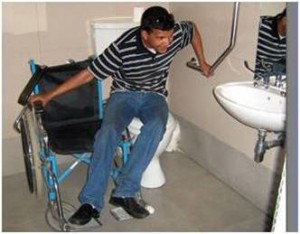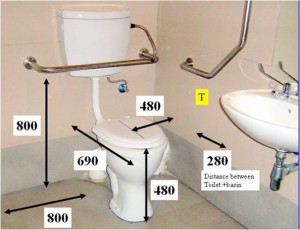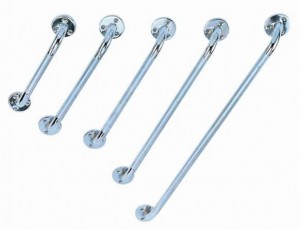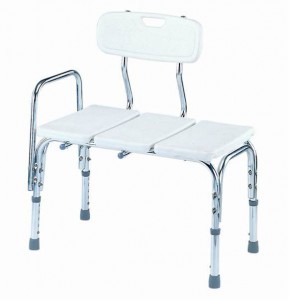Grabrails & Doglegs
Grabrails & Doglegs. Let’s look at a couple of assistive devices for toilets & bathrooms. The two pics below show how easy it can be for mobility impaired persons to transfer quickly and easily using the right equipment. The picture of the toilet and basin is courtesy of QASA and this shows the correct heights and distances of Grabrails and Dogleg Rails.
Grabrails and dogleg rails are of huge assistance to many people, not just those in wheelchairs but anyone who is in anyway mobility impaired, ie stroke victims, the elderly etc etc. They are available in a vast array of sizes & shapes. There are the simple rails that fit around cisterns and above washbasins and baths, then you have the dogleg rails, so named because of their resemblance to a dog’s leg! These can be either 2 or 3 flange and are a must in many bathrooms and toilets.
Legislation states that toilets and bathrooms that cater to any kind of disability require these to be fitted.
All the above rails come in either stainless steel, mild steel or, in the case of overseas imports, high density plastic in a range of colours to suit. Prices vary from place to place but for those on strict budgets the mild steel rails are highly cost effective.
Aside from the simple rails, there are speciality rails that fit around corners and are ideal for showers. Then we have the floor mounted rails or the fold up hinge rails and some of them even come with toilet roll holders, depending on which side of the toilet you put them on. The hinge rails are also excellent in shower rooms.
When it comes to baths, these vary from straight rails to bath end rails, right & left, to free standing bath rails, all of which gives superb leverage for standing up and support whilst sitting down. All of these are only available in stainless steel and because they are classed as speciality rails they are quite expensive, albeit very effective in certain situations.
When designing a bathroom or shower room for a disabled person, it is crucial you take into account that manoeuvrability is paramount to the success of the room. There should always be room for the wheelchair to go under the basin and ideally should have a vanity on either side. If there is going to be a bath, cognisance should be taken of where it is sited in order that the patient hoist is able to get close enough (this also applies to toilet layout).
If the room is a shower room the ideal, most cost effective scenario is a ‘wet floor’. This means there are no encumbrances such as shower doors and steps into the shower, the room is open to the toilet. These floors can either be screeded concrete or tiled but please ensure the water flows towards the waste pipe not away from it, otherwise you will spend your day mopping!! I have seen a number of ‘wet floors’ with the flow the wrong way due to ignorance or poor building and to change this is extremely difficult. For those who get it right, what a joy. The person can wheel themselves into the shower (if they have a self propelled shower chair/commode) and feel fully independent. Alternatively an aluminium transfer bench/shower chair is ideal for those who need to sit and require support and a backrest.
Bathing and showering should be pleasurable for everyone, especially in this hot climate of ours and sometimes it takes just a little thought and a couple of rails to make all the difference to someone who needs it.
If you need further advice please feel free to contact me on info@mobilitysolutions.co.za and I will be happy to respond to your queries.
Until next time, take care, stay safe and smile lots.





